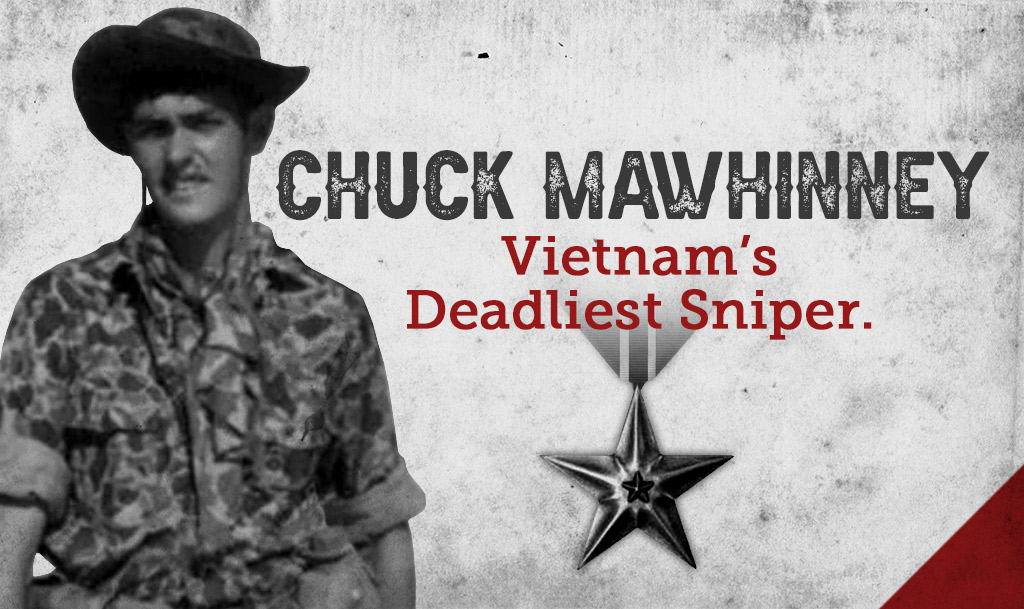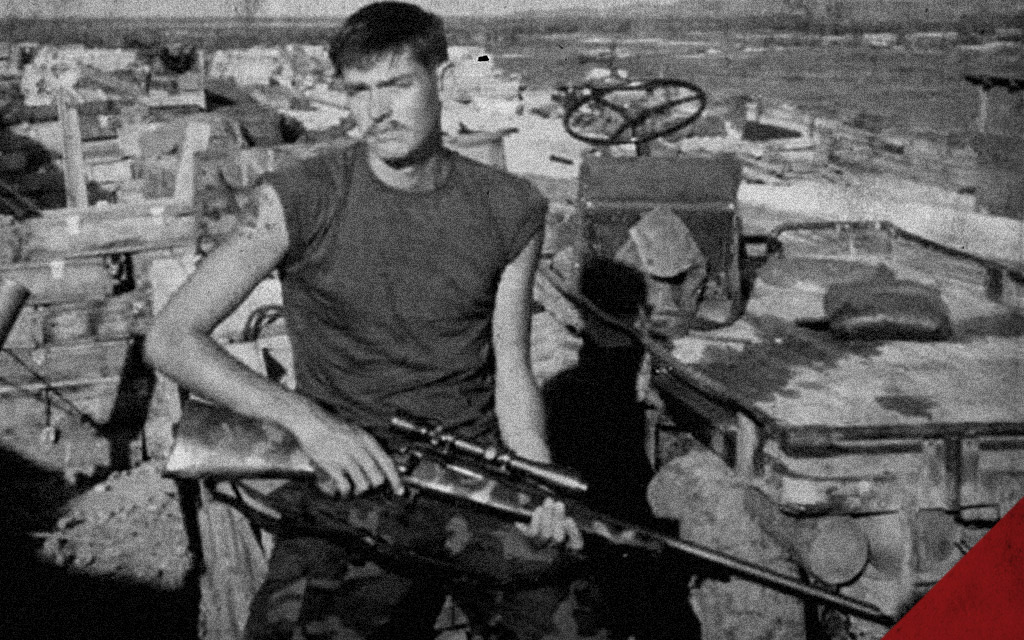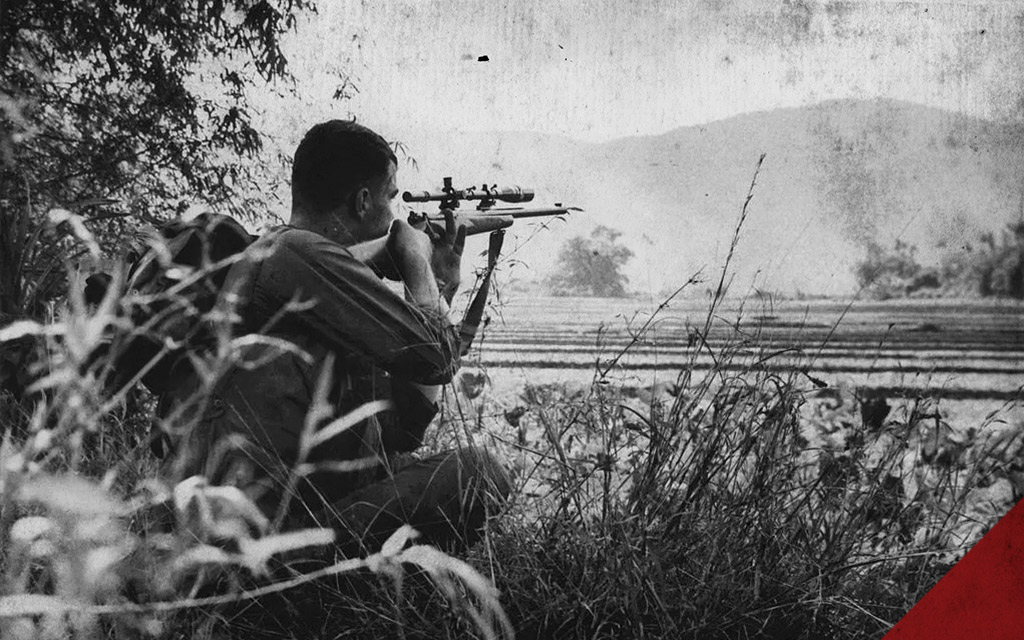

Chuck Mawhinney was a legendary U.S. Marine whose story slips through the jungles of Vietnam like a shadow but had the impact of a thunderbolt. Born on October 30, 1949, in Lakeview, Oregon, Charles “Chuck” Mawhinney grew up with a rifle, perfecting the quiet art of patience and precision from a young age.
These skills, honed by his upbringing in a family that valued hunting and marksmanship, boosted him into the annals of military folklore as one of the most respected snipers in the Corps’ history. His unassuming demeanor and exceptional skill made him an icon of the “silent warriors” who left a lasting mark on the battlefield without fanfare.
During his tour in Vietnam from 1968 to 1970, he wrote his name beside the word ‘legendary’ in the military community – though it would be decades before someone told his story. Hidden by the modesty that defined him, Mawhinney’s extraordinary achievements as a sniper stayed unrecognized for years. A fellow sniper revealed his records and showed that his confirmed kill count had surpassed 100. Then, the world finally understood the magnitude of his accomplishments.
Behind his battlefield exploits is a man of unwavering commitment to his fellow Marines. He’s a testament to the quiet professionalism and lethal effectiveness that define a sniper. He was a master of his craft out of sheer necessity and devotion to duty.
Chuck Mawhinney’s Twenty Years Of Silence

Chuck Mawhinney was awarded the Bronze Star and Navy Commendation medal, both with Combat Valor for his service.
Mawhinney kept his sniper past a secret for many years, not even sharing it with his wife. While his friends and family knew of his service in Vietnam, they had no idea of his heroism. He had earned a Bronze Star and a Navy Commendation Medal, both with Combat Valor, and a Navy Achievement Medal, and he received the Purple Heart with two Oak Leaf Clusters for his bravery.
Joseph Ward, who served with him as a spotter in Vietnam, revealed Mawhinney’s record of sniper kills in his 1991 book, Dear Mom: A Sniper’s Vietnam. Mawhinney was unaware of the book until a writer named Peter Senich came across it and verified the claims in the Marine Corps records.
Although Carlos Hathcock was long thought to hold the Marine record with 93 kills, Mawhinney had surpassed this with 103 confirmed kills and an additional 216 probable ones. Senich’s 1996 article in Precision Shooting Magazine about Mawhinney’s achievements brought his story to light and profoundly impacted his life. This revelation set the record straight and shed light on the incredible accomplishments of a man silently making history.
Another St. Valentine’s Day Massacre
As a sniper, Chuck Mawhinney filled several roles, including staying up all night with his rifle and night scope and watching the perimeter of an encampment for incursions. He also went out on patrol with other Marines, ready to support them if a firefight broke out. But mostly, he and his spotter, a novice sniper who helped him identify targets, went out alone, looking for individual targets to kill and destroy enemy morale.
I could see the bodies floating down the river.” – Chuck Mawhinney
After long periods of silent watchfulness, Mawhinney took down most of his targets with a single round from his M40 rifle. However, there were instances of rapid engagement. On the evening of February 14, 1969, St. Valentine’s Day, he lay in wait as a platoon of North Vietnamese soldiers forded a shallow stream near Da Nang, headed towards a U.S. Marine station. Calm and deliberate, he opened fire, taking out 16 soldiers — all with headshots — within just half a minute, causing the survivors to fall back.
“The Ultimate Hunting Trip”

Marine snipers spent long days, and nights in the field looking for enemies during the Vietnam War.
Mawhinney never considered himself a naturally gifted sniper; his proficiency came from years of relentless training. Still, he possessed a remarkable capacity to endure the severe discomfort and immobility required to lie concealed in the jungle. He maintained his position, staying vigilant for any sign of the enemy and enduring the attention of insects and snakes.
By his account, his resting heart rate was just 50 beats a minute, and he would use the pumping of his heart and the rise and fall of his breath to time his shots.
“It was the ultimate hunting trip,” he told the Los Angeles Times years later. “A man hunting another man who was hunting me. Don’t talk to me about hunting lions or elephants; they don’t fight back with rifles and scopes. I just loved it.”
Reluctant to speak for many years, once he did begin talking, he attempted to change the public’s perception of snipers, whom he maintained saved lives by draining the enemy’s will to fight. “My rules of engagement were simple: If they had a weapon, they were going down. Except for an NVA paymaster I hit at 900 yards, everyone I killed had a weapon.”
After Vietnam
After serving his country with distinction as a sniper in the Vietnam War, Chuck Mawhinney retired from the Marines. He returned to the United States, transitioning to a life far removed from the jungles of conflict. He married and fathered three sons while channeling the discipline and focus that had made him an exceptional Marine into a civilian career in the United States Forest Service.
Although he did not initially talk about his military exploits, the publication of Joseph Ward’s book introduced the public to Mawhinney’s service as a sniper in Vietnam. A modest man, Mawhinney found himself unexpectedly thrust into the spotlight as one of the most effective snipers in American history. In the following years, he became a symbol of excellence within the sniping community, respected for his skills and revered for his discretion and humility.
Chuck Mawhinney’s Retirement from the Forest Service
Following his retirement from the Forest Service in 1997, Chuck shared his experiences at various events. These included conventions and public engagements, and he also participated in sniper shooting competitions nationally. He became the face and voice of Strider Knives, endorsing a specially designed knife bearing his signature. This knife, a symbol of excellence, is awarded to the top graduating student from each USMC Scout Sniper School class at Camp Pendleton.
Starting in 2006, his commitment to his craft led him to address new generations of snipers, imparting his knowledge and experience to service members during their training.
He was also the subject of a History Channel special called Sniper: The Anatomy of the Kill, in which the show recreated an “astounding” headshot by Mawhinney.
Chuck’s M40 Sniper Rifle Gets A Well-Deserved Place Of Honor

The M40 sniper rifle was introduced in 1966, and was built around a modified Remington 700 bolt action rifle.
Although he used other rifles, Chuck Mawhinney’s primary weapon was the M40 rifle. It’s a modified version of the Remington 40X with bolt-action mechanics chambered for 7.62×51 mm NATO. Introduced in 1966, the rifle quickly became the standard issue for Marine snipers. Mawhinney’s M40, fitted with a Redfield 3-9X Accu-Range scope, afforded him exceptional accuracy during combat.
In one particularly fierce skirmish, Mawhinney opted to leave behind his sniper rifle and advanced with an M14 semiautomatic rifle. This rifle had an early version of night vision technology, known as the Starlight scope, allowing him to engage effectively in darkness.
Eventually, an admirer in the Marine Corps tracked down Mawhinney’s M40 sniper rifle. Refurbished, it now holds a place of honor in the Vietnam Gallery at the National Museum of the Marine Corps and has been on display since the museum’s inauguration in 2006.
Chuck Mawhinney’s Legacy & Sage Advice
Although it’s difficult to determine why Chuck Mawhinney became one of the most devastating snipers in modern warfare, many will point to his upbringing and natural talent. However, the Marine sharpshooter had a different take on it.
When a South Florida Sun-Sentinel reporter asked him what advice he’d give to anyone hoping to follow in his footsteps, he replied without hesitation:
“I give them Chuck Mawhinney’s three rules of becoming a good sniper: Practice, practice, and more practice!”
Chuck Mawhinney spent his later years in Baker City, Oregon, and died there on February 12, 2024, at the age of 74.


